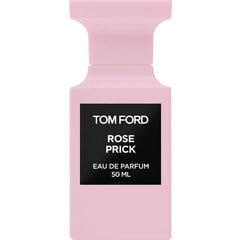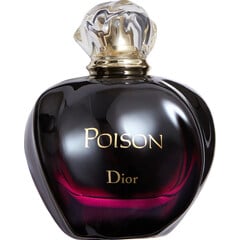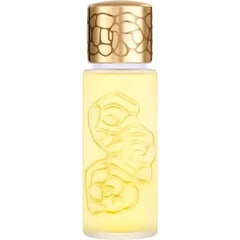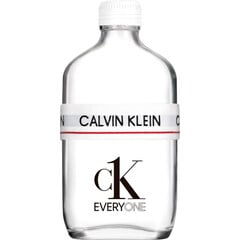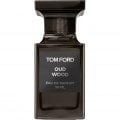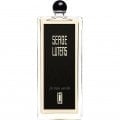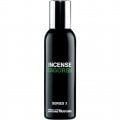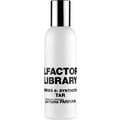
loewenherz
Reviews
Filter & sort
Translated
Show original
I'm not angry. Just disappointed.
Right from the start, I had two conflicting feelings in my chest. On the one hand, the very obvious - and already expressed in other comments, most recently in the unspeakable Vanilla Sex - latent annoyance at the ambiguously stupid name, but I don't need to stress the subject again here. On the other hand, a certain curiosity that someone is finally trying a rose without oud again - should Tom Ford really still...?
Yes and no, and this indecisiveness is a shame. On the one hand, oud is actually largely omitted. I have nothing against oud, but in combination with rose, this accord has become so dead that it can now also be found in scented candles from Zara Home and drugstore shower gels. On the other hand, the opportunity to finally try rose again without oud is wasted here: Rose Prick could (and should) have been much more special than it is.
Tom Ford can actually do rose. Café Rose - the first one from 2012 - is wonderful. And the more recent Rose d'Amalfi, Rose de Chine and the early discontinued Rose de Russie are each remarkable and beautiful in their own right. In this respect, expectations were naturally high for a wine called Prick - which in English means both 'prick' and also describes the male sexual organ in a vulgar colloquial way - giggle, giggle, blushing shamefully. He can't fulfill them for me.
Rose Prick is not fundamentally disappointing as a fragrance. Here is a powerful, albeit quite monochrome rose, accompanied by a warmly vibrant base note based on spice. This is not badly done, but the characteristic of Szechuan pepper to sensually trigger a kind of tingling numbness, a hint of green plant juices (or of blood) - or of something that looks like 'prick' - follows the initial rose far too little.
The aforementioned scent chords do exist in perfumes: Serge Lutens' Sa majesté la rose masterfully traces the wounded green of rose petals, and Etat Libre d'Orange's infamous Sécrétions Magnifiques recreates the association with blood (and other bodily fluids) with an accuracy that is almost too bold. Estée Lauder does not dare to do any of this, and in terms of marketing, Rose Prick is more of a private blend than ever - the fragrance itself is not (anymore).
Conclusion: no reason to be angry with Tom Ford. Just - as so often recently - a little disappointed.
Yes and no, and this indecisiveness is a shame. On the one hand, oud is actually largely omitted. I have nothing against oud, but in combination with rose, this accord has become so dead that it can now also be found in scented candles from Zara Home and drugstore shower gels. On the other hand, the opportunity to finally try rose again without oud is wasted here: Rose Prick could (and should) have been much more special than it is.
Tom Ford can actually do rose. Café Rose - the first one from 2012 - is wonderful. And the more recent Rose d'Amalfi, Rose de Chine and the early discontinued Rose de Russie are each remarkable and beautiful in their own right. In this respect, expectations were naturally high for a wine called Prick - which in English means both 'prick' and also describes the male sexual organ in a vulgar colloquial way - giggle, giggle, blushing shamefully. He can't fulfill them for me.
Rose Prick is not fundamentally disappointing as a fragrance. Here is a powerful, albeit quite monochrome rose, accompanied by a warmly vibrant base note based on spice. This is not badly done, but the characteristic of Szechuan pepper to sensually trigger a kind of tingling numbness, a hint of green plant juices (or of blood) - or of something that looks like 'prick' - follows the initial rose far too little.
The aforementioned scent chords do exist in perfumes: Serge Lutens' Sa majesté la rose masterfully traces the wounded green of rose petals, and Etat Libre d'Orange's infamous Sécrétions Magnifiques recreates the association with blood (and other bodily fluids) with an accuracy that is almost too bold. Estée Lauder does not dare to do any of this, and in terms of marketing, Rose Prick is more of a private blend than ever - the fragrance itself is not (anymore).
Conclusion: no reason to be angry with Tom Ford. Just - as so often recently - a little disappointed.
4 Comments
Translated
Show original
Benetton sweater around the shoulders, Chris de Burgh on the walkman
It is a rehearsed ritual as they stroll along the pedestrian zone, one after the other. In their slow and confident gait, their silhouette, their style, they resemble queens in snow-white jeans and tight lace bodysuits, every now and then one of them blows against her bangs from below as if by chance. None of them has a cell phone - it's the early 90s, there's no such thing. Instead, they wear thin Benetton sweaters around their shoulders, casually knotted and never really worn, because they are only there to 'casually knot around their shoulders'.
Constant and daily use has not worn away their friendship - every Friday and Saturday afternoon they walk past the same pedestrian zone shop windows, Chris de Burgh's Lady in Red on the Walkman, each with just one earbud in their ear. They pause at the hippest ice cream parlor - effortlessly avoiding the appreciative glances of the boys (and the less hip girls) - and then slowly stroll on, as if by chance and yet deliberately - as if they were walking over the necks of farmers, their Benetton sweaters bobbing along to the rhythm.
A shimmering cloud of fragrance floats behind them - to speak of a whiff would be imprecise and a great understatement - while the gazes of the boys in Chevignon jackets and Windsurfing Chiemsee T-shirts follow them. They can see it in the pedestrian zone shop windows, but none of them think to turn their heads. And in the cloud, orange honey, plum, tuberose also follow them, making this squadron of 80s basically completely unsuitable for young girls - especially on a Saturday afternoon, especially with Chris de Burgh.
Dior's Poison has always been one that the confident girls wore - it doesn't allow careless use - the ones with the lace bodysuits and Benetton sweaters. The ones who spent their weekends in the pedestrian zone and the ice cream parlor and were accompanied to dance school by the cool Chevignon jacket boys. Who secretly tried the first red Gauloises in the school toilet, coughing, whose smoke then mixed with orange honey, plum and tuberose - and lingered in the Benetton sweaters and lace bodies for a long time.
Conclusion: the girls of yesteryear are now women in their fifties, with thirty-five extra years in their hearts and faces. Basically, Poison was and is one for a woman who has life to show for herself, who has loved, regretted, lost. Perhaps the girls of my youth should try it again today. Even without a Benetton sweater. And without Chris de Burgh.
Constant and daily use has not worn away their friendship - every Friday and Saturday afternoon they walk past the same pedestrian zone shop windows, Chris de Burgh's Lady in Red on the Walkman, each with just one earbud in their ear. They pause at the hippest ice cream parlor - effortlessly avoiding the appreciative glances of the boys (and the less hip girls) - and then slowly stroll on, as if by chance and yet deliberately - as if they were walking over the necks of farmers, their Benetton sweaters bobbing along to the rhythm.
A shimmering cloud of fragrance floats behind them - to speak of a whiff would be imprecise and a great understatement - while the gazes of the boys in Chevignon jackets and Windsurfing Chiemsee T-shirts follow them. They can see it in the pedestrian zone shop windows, but none of them think to turn their heads. And in the cloud, orange honey, plum, tuberose also follow them, making this squadron of 80s basically completely unsuitable for young girls - especially on a Saturday afternoon, especially with Chris de Burgh.
Dior's Poison has always been one that the confident girls wore - it doesn't allow careless use - the ones with the lace bodysuits and Benetton sweaters. The ones who spent their weekends in the pedestrian zone and the ice cream parlor and were accompanied to dance school by the cool Chevignon jacket boys. Who secretly tried the first red Gauloises in the school toilet, coughing, whose smoke then mixed with orange honey, plum and tuberose - and lingered in the Benetton sweaters and lace bodies for a long time.
Conclusion: the girls of yesteryear are now women in their fifties, with thirty-five extra years in their hearts and faces. Basically, Poison was and is one for a woman who has life to show for herself, who has loved, regretted, lost. Perhaps the girls of my youth should try it again today. Even without a Benetton sweater. And without Chris de Burgh.
16 Comments
Translated
Show original
Never again night
Quelques Fleurs was not the first creation of the legendary House of Houbigant, but it is certainly the most famous today. It is said to be the first multifloral fragrance in perfume history - in other words, the first to orchestrate several floral accords, allowing them to work alongside and with each other. This makes it a monolith among contemporary perfumes today, because over a hundred years later it is still being worn and bought - amazingly ageless and eternally young.
'Astonishingly ageless' perhaps needs to be explained, because for a nose that has grown up and become fragrance-socialized after the turn of the millennium, it is naturally unfamiliar and strange. Contemporary perfumes, which attempt to explain light and youth in floral language, make use of later techniques and a different olfactory architecture. This one is like the sound of the harpsichord - anachronistic and highly contemporary at the same time - surprising in the context of today and therefore 'eternally young'.
Houbigant's Quelques Fleurs is reminiscent of the fine aquantint drawing of a flower meadow, highly concise and every chord precise - and yet seemingly random, as if thrown in, filigree contours of meadow herbs and the fine freshness of the garden carnation, lily and rose in a delicacy that has been lost today, almost casually and quite nonchalantly. Each of them is recognizable, but none is dominant, each tells its own story, and each allows the other to tell its own.
Is this a fragrance for someone who is looking for fragrance-historical anachronisms? Possibly. Does Quelques Fleurs smell like 1912, like our great-grandparents? Perhaps that too. Does Quelques Fleurs even smell 'old'? Yes, in the same way that a flower garden painted by Franz Marc, Wassily Kandinsky or August Macke smells 'old' - bright and swirling colors on a white canvas in the dazzling light of a rising sun in April. Yes, in that sense Quelques Fleurs smells 'old
Conclusion: a fragrant symphony of light and spring. Never again winter. And never again night.
'Astonishingly ageless' perhaps needs to be explained, because for a nose that has grown up and become fragrance-socialized after the turn of the millennium, it is naturally unfamiliar and strange. Contemporary perfumes, which attempt to explain light and youth in floral language, make use of later techniques and a different olfactory architecture. This one is like the sound of the harpsichord - anachronistic and highly contemporary at the same time - surprising in the context of today and therefore 'eternally young'.
Houbigant's Quelques Fleurs is reminiscent of the fine aquantint drawing of a flower meadow, highly concise and every chord precise - and yet seemingly random, as if thrown in, filigree contours of meadow herbs and the fine freshness of the garden carnation, lily and rose in a delicacy that has been lost today, almost casually and quite nonchalantly. Each of them is recognizable, but none is dominant, each tells its own story, and each allows the other to tell its own.
Is this a fragrance for someone who is looking for fragrance-historical anachronisms? Possibly. Does Quelques Fleurs smell like 1912, like our great-grandparents? Perhaps that too. Does Quelques Fleurs even smell 'old'? Yes, in the same way that a flower garden painted by Franz Marc, Wassily Kandinsky or August Macke smells 'old' - bright and swirling colors on a white canvas in the dazzling light of a rising sun in April. Yes, in that sense Quelques Fleurs smells 'old
Conclusion: a fragrant symphony of light and spring. Never again winter. And never again night.
11 Comments
Translated
Show original
Coco Jamboo (2020 Remix feat. Calvin Klein)
It is with a mixture of astonishment and fascination that I am currently observing that the subculture of the 90s - my personal coming-of-age decade - has been hot shit again for a few years among Generation Z (i.e. those born in the late 90s and after), at least in part. And I remember back then listening to Dr. Alban, Haddaway and Blümchen, producing rear-end collisions in front of H&M billboards with Anna Nicole Smith and seeing a skinny Kate Moss looking sad and hungry into the lens of Calvin Klein ads in black and white. We, those born at the transition between Generation X and Millenials - we were there!
In terms of perfume, the 90s brought a paradigm shift. The 80s boundaries between permed-blue-shaded women's fragrances (Linda Evans, Morgan Fairchild) and chest-hairy moustachioed men's fragrances (Tom Selleck, Jürgen Hingsen) were blurred. Aquaten and other newcomers conquered the market and then came - bam! - came CK One, one for everyone, unisex, crazy! That was a gamble. Uproar. New. The 90s became the decade of Klein's triumph - Obsession, Escape, Eternity and, of course, Kate Moss and Marky Mark in underwear - which only culminated in the turn of the millennium with Zladdi and Jürgen. As I said - we were there!
It is understandable to request the right olfactory soundtrack for a revival. However, many of the fragrances from the 90s are still available - reformulated or not - and there is little or no need for a 90s quote, especially a bland, loveless one like this. The fragrance-historical essence of the 90s has a high recognition value, and it therefore requires a certain care and a momentum of surprise to work in the present. Because why should I listen to a lame remix of Mr. President's legendary Coco Jamboo when I can download the original from 1996? Yes, exactly.
I confess that this test and review only came about because someone slipped a sample of CK Everyone into my bag. I was tempted to throw it away unopened and then let curiosity (and admittedly a certain desire for the expected catastrophe) drive me on. What I had in my nose was a loveless and remarkably boring 90s-wannabe-ginger-shower-gel-something fragrance of fortunately little staying power and range that I won't remember tomorrow. I briefly thought about listening to Coco Jamboo on YouTube again. Maybe I will do that.
Conclusion: the 90s are over. Deal with it.
In terms of perfume, the 90s brought a paradigm shift. The 80s boundaries between permed-blue-shaded women's fragrances (Linda Evans, Morgan Fairchild) and chest-hairy moustachioed men's fragrances (Tom Selleck, Jürgen Hingsen) were blurred. Aquaten and other newcomers conquered the market and then came - bam! - came CK One, one for everyone, unisex, crazy! That was a gamble. Uproar. New. The 90s became the decade of Klein's triumph - Obsession, Escape, Eternity and, of course, Kate Moss and Marky Mark in underwear - which only culminated in the turn of the millennium with Zladdi and Jürgen. As I said - we were there!
It is understandable to request the right olfactory soundtrack for a revival. However, many of the fragrances from the 90s are still available - reformulated or not - and there is little or no need for a 90s quote, especially a bland, loveless one like this. The fragrance-historical essence of the 90s has a high recognition value, and it therefore requires a certain care and a momentum of surprise to work in the present. Because why should I listen to a lame remix of Mr. President's legendary Coco Jamboo when I can download the original from 1996? Yes, exactly.
I confess that this test and review only came about because someone slipped a sample of CK Everyone into my bag. I was tempted to throw it away unopened and then let curiosity (and admittedly a certain desire for the expected catastrophe) drive me on. What I had in my nose was a loveless and remarkably boring 90s-wannabe-ginger-shower-gel-something fragrance of fortunately little staying power and range that I won't remember tomorrow. I briefly thought about listening to Coco Jamboo on YouTube again. Maybe I will do that.
Conclusion: the 90s are over. Deal with it.
3 Comments
Translated
Show original
Knock-knock-knockin' on heaven's door
Rarely do I experience a pictorial sensory impression in a fragrance as focused and memorable as here. This is all the more astonishing as I do not consider this monothematic approach to be characteristic of Acqua di Parma and its product portfolio. On the contrary, it is mostly about a lively kaleidoscope of everything that is generally classified as 'Italian': charming and well-dressed signors and signori who cut a fine figure in a summery piazza, if I may be permitted so much green-white-red cliché here.
This one is different. Hardly Italian. Something from the Far East. And a lot 'above the clouds'.
The camellia - originally native to Asia - symbolizes devotion and longing. It grows in partial shade and its fragrance is both fleeting and haunting, with a delicate, almost shy sweetness. And so Acqua di Parma's Camelia is also a fragrant, delicate fragrance full of youth and - and this is where the monothematic mentioned at the beginning comes into play - innocence and purity, located somewhere between elvish princess and childlike empress, as delicate as butterfly wings, ethereally bright and fine.
Conclusion: a fragrance like tissue paper and crane feathers, luminous white, fragrant and delicate. And like a shy knock on heaven's door.
This one is different. Hardly Italian. Something from the Far East. And a lot 'above the clouds'.
The camellia - originally native to Asia - symbolizes devotion and longing. It grows in partial shade and its fragrance is both fleeting and haunting, with a delicate, almost shy sweetness. And so Acqua di Parma's Camelia is also a fragrant, delicate fragrance full of youth and - and this is where the monothematic mentioned at the beginning comes into play - innocence and purity, located somewhere between elvish princess and childlike empress, as delicate as butterfly wings, ethereally bright and fine.
Conclusion: a fragrance like tissue paper and crane feathers, luminous white, fragrant and delicate. And like a shy knock on heaven's door.
6 Comments

 loewenherz
loewenherz